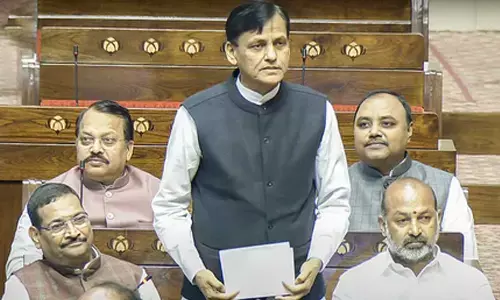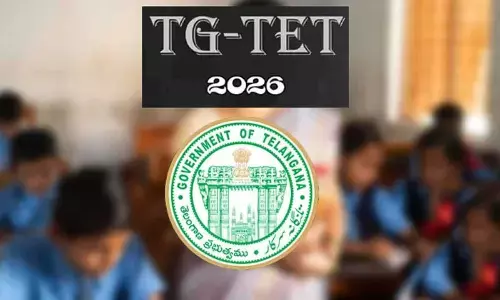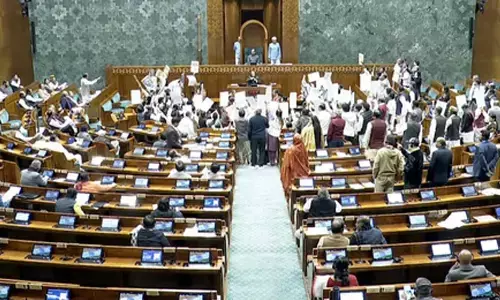India likely to blink on renewable energy targets

In April 2016, Piyush Goyal, the Power and Renewable Energy Minister, reiterated that India\'s solar power target 100 GW by 2022 was achievable, but an IndiaSpend analysis shows that this expansion is challenged by weak infrastructure and a lack of cheap financing.
In April 2016, Piyush Goyal, the Power and Renewable Energy Minister, reiterated that India's solar power target 100 GW by 2022 was achievable, but an IndiaSpend analysis shows that this expansion is challenged by weak infrastructure and a lack of cheap financing. To achieve its targets, India must add 130.76 GW of renewable energy over the next six years, an average of 21.7 GW per year or, three times the capacity it added in 2016.
This target is crucial for India in achieving its goal to reduce global warming by the year 2100, the earth's temperature could increase by an average of 1.8 degrees Celsius, in the best scenario, and four degrees Celsius. In 2016, carbon dioxide (CO2) levels in the world crossed 400 parts per million, levels that will now last our lifetime. The power sector in India produces about half of all CO2 emissions in the country (805.4 million tonnes), according to the power ministry's Draft National Electricity Plan 2016; coal is the most polluting of all power sources.
In 2015, the world, through the Paris Agreement, agreed to limit the rise of the earth's temperature to under two degrees Celsius by the year 2100. As many as 162 countries, including India, have submitted their Intended Nationally Determined Contributions (INDC), documents which describe steps countries will take to limit global warming.
As part of its INDC, India has committed to source 40 per cent of its electricity from non-fossil fuel sources by 2030. In October 2016, renewable energy made up 15 per cent of India's installed electricity production capacity, up from 13.1 per cent in August 2015, according to government data. The government's ambitious target has created awareness about renewable energy. Even companies that do not benefit from government subsidies for renewable energy projects said the push for such energy has made consumers more aware about its virtues.
India's renewable energy targets are "highly optimistic and not realistic", said Vibhuti Garg, a power sector expert at the International Institute for Sustainable Development, a Canada-based environmental non-profit. India's 2022 target is equivalent to 22 per cent of the world's cumulative renewable energy capacity in 2015 -- 785 GW, excluding hydel power projects, according to a 2016 report by the Renewable Energy Policy Network, an international non-profit, based at the United Nations Environment Program.
Over the last quarter of 2016, the government auctioned fewer projects than needed to match its renewable energy goals, according to a report by the Mercom Capital Group, a US-based energy research and communications firm. The country needs $100 billion in asset financing for renewable energy over the next six years, according to report by Bloomberg New Energy Finance (BNEF), a London-based energy consultancy.
In the government's Renewable Energy Invest Summit in 2015, developers and manufacturers of wind and solar energy products and plants committed to nearly 240 GW of renewable capacity addition by 2022, but financiers committed money for only 70 GW added capacity, according to CEEW. Some changes have helped the sector. For instance, the capital expenditure per watt of solar energy produced has fallen to Rs 60.6 in 2015-16 from Rs 79.7 in 2013-14, and is further projected to fall to Rs 53 in 2016-17, according to the BNEF report.
Infrastructure for parks such as development of access roads, land acquisition for parks, and demarcation of land areas within solar parks, is incomplete, even after bids for projects are completed, which could affect project costs and profitability, according to the Mercom Capital Group report. Further, power from sources such as wind and solar is intermittent, and forecasting of energy levels is weak. One way out would be to store energy when excess is produced, but storage equipment for solar energy is expensive.
Another challenge is whether India's electricity grid has the capacity to take intermittent power surges that will occur because of renewable energy. The grid should also have the capacity to carry power from regions where power is generated to the regions where power is needed. Solar power projects in India have a "must-run" status, which means they should be running at all times possible, given that there is no fuel cost when compared to thermal power projects which use coal.
But solar plant operators were asked to "back down" or stop producing electricity several times, which is a disincentive for companies as they are not paid for the lost energy during that period, according to a renewable energy ministry document in August 2016. (In arrangement with IndiaSpend.org)
By Shreya Shah


















